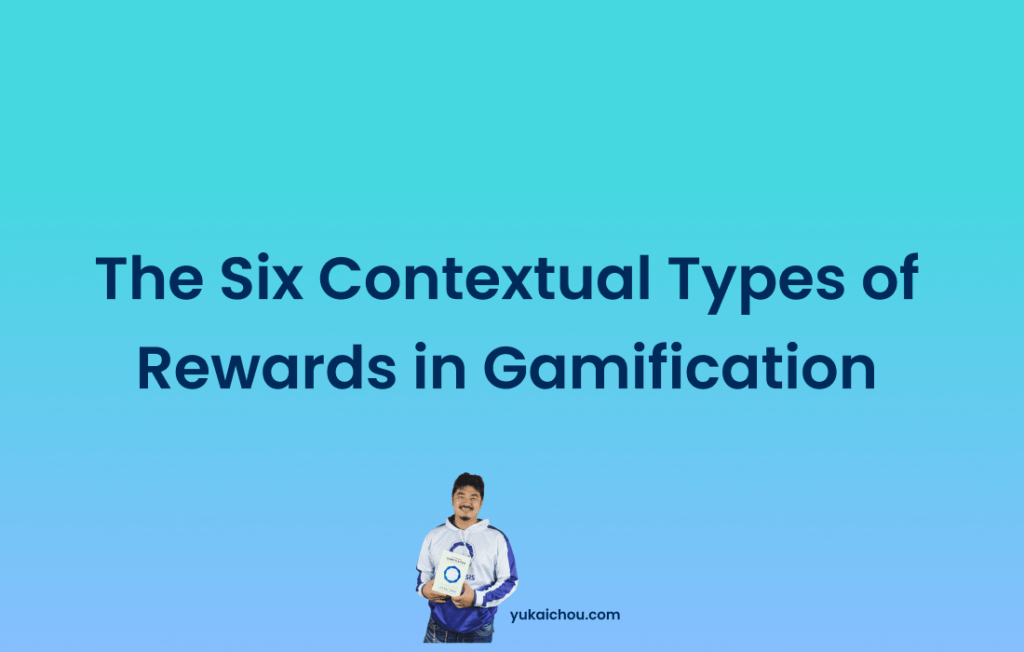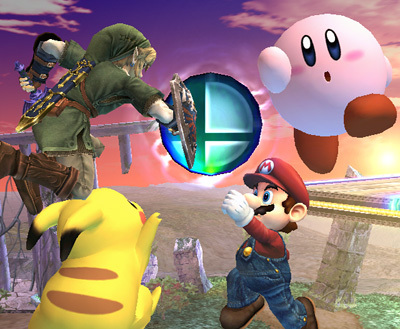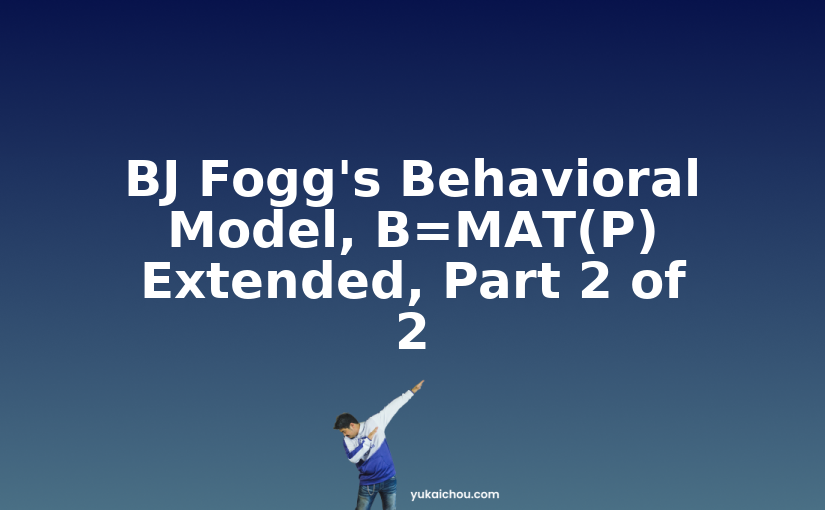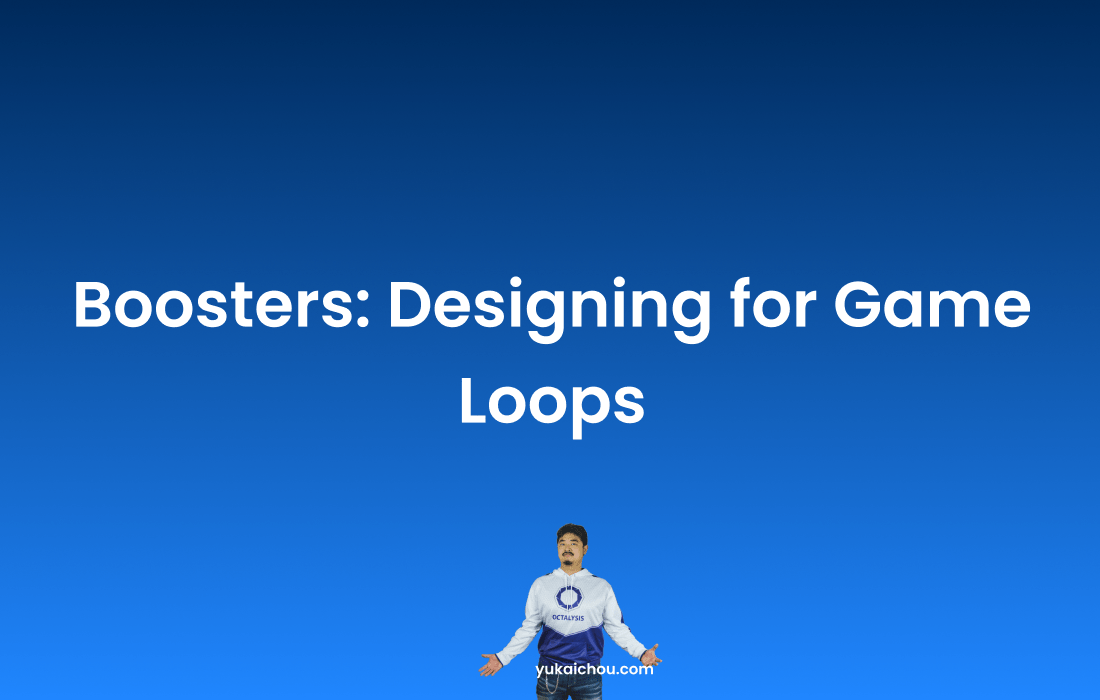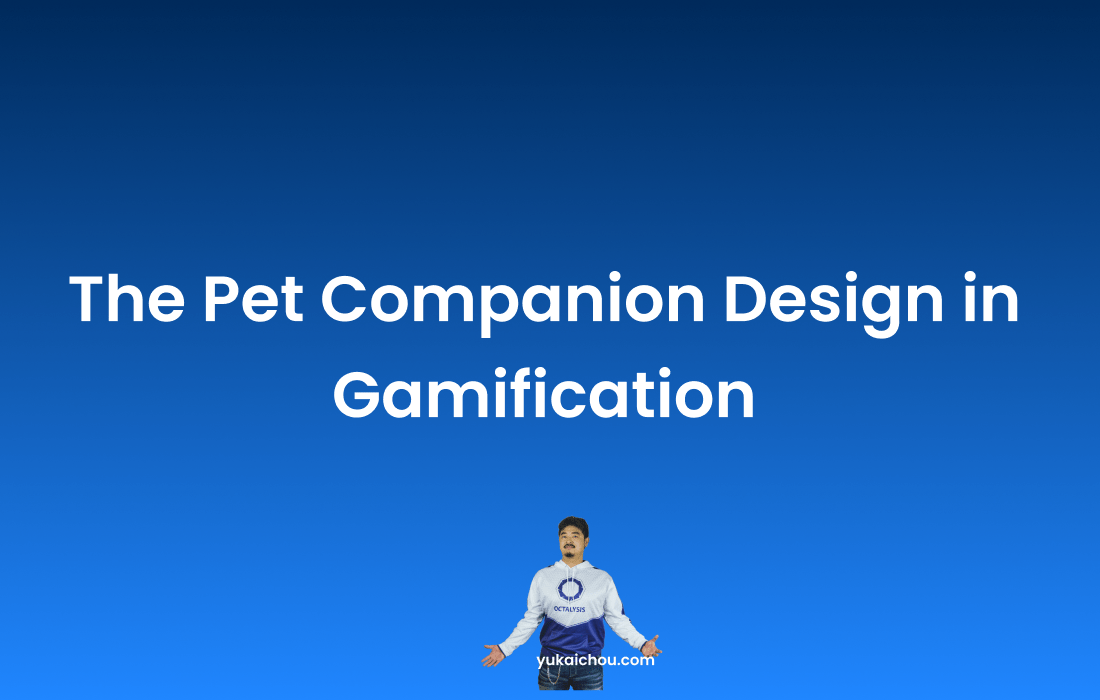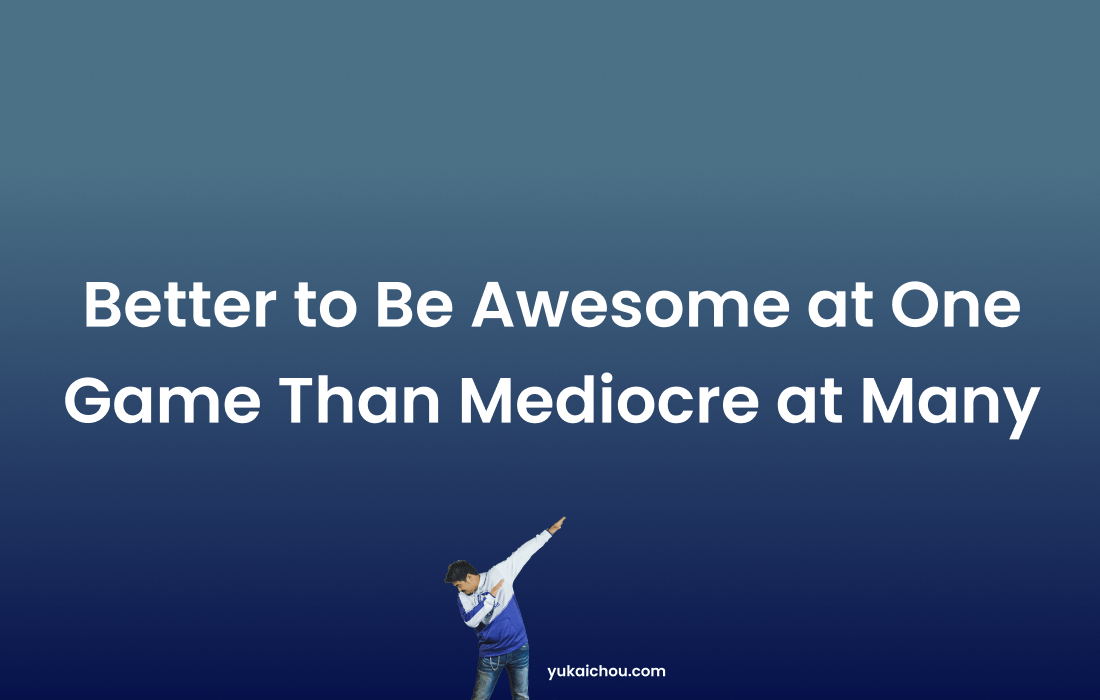Make your Gamified Experience Rewarding
Everyone wants rewards, right? But so often, companies failed to use rewards to incentivize their users or customers to take a specific action. Here I’ll cover six different types of rewards that companies are using to build their customer base and develop engaged users and customers, and we’ll look at how you can implement the same rewards in your own business.
The goal of this post is to make applying gamification and Octalysis easier. Perhaps some of you might still feel the 8 Core Drives are still too abstract, and want to jump straight into “how do I reward my users” (which is not great thinking as you would know from my work).
Keep in mind, the reward context types below are not mutually exclusive, as you can have one reward include multiple contextual types, but they are useful in being archetypes when you think about reward structures.
Gamification Reward #1: Fixed Action Rewards (Earned Lunch)
The first type of reward within gamification is the Fixed Action Reward, or Earned Lunch (Game Technique #7). This is pretty straight forward – the user knows exactly what she must do to get the reward.
Examples include anything that involves collecting points, frequent flyer miles, or punches on your card — in other words, loyalty programs of all flavors. With these rewards, the company lays out exactly what the customer has to do to earn something, and then gives the customer a way to track how far they’ve come along in their goal.
Fixed Action Rewards engage customers by building their loyalty and rewarding frequent action. For example, if a customer works near a deli shop, and that deli shop offers a free sandwich when he gets 12 punches on his loyalty card, that customer will be more motivated to grab lunch at the deli shop every day. In fact, as the customer gets closer to completing his 12 punches, he become even more frequent at the deli because he wants to finish up his card and collect his reward.
This utilizes the three Left Brain Core Drives – Development & Accomplishment (Core Drive #2), Ownership & Possession (Core Drive #4), and Scarcity & Impatience (Core Drive #6).
Gamification Reward #2: Random Rewards (Mystery Box)
The second type of reward in gamification is the Random Reward (Game Technique #72).
While fixed action rewards are great for helping companies build loyalty, they are heavily implemented and lacks some right brain core drives that gets customers really engaged. There are a few ways to spice things up, and Random Rewards is one of them.
In games, there is the concept of “loot” or “drops” which are random rewards that appear once the player achieves a win-state or defeats an enemy. Often times, this unpredictable process is what drives players in the Endgame (Experience Phase #4).
With random rewards, the participant gets a reward based on completing a required action, but they don’t necessarily know what the reward is. This actually doesn’t matter and can even enhance their engagement; the process of getting the reward is exciting because the participant knows that they will be surprised at the end by whatever they end up with.
Using random rewards makes participants feel like they did on Christmas morning as a kid. They saw the rewards under the tree, and they knew they would find out what they were getting eventually. But the anticipation of getting the reward, even though they have no idea what’s in the boxes, is part of what makes things so exciting.
Quarterly is a subscription company that offers mystery boxes to its customers every three months. They source their themes from influencers like Timothy Ferriss, bestselling author of The 4-Hour Chef/Body/Work Week.
These influencers hand select items to go in their mystery box and participants are allowed to subscribe to the box without knowing what there can end up getting.
Why would anyone spend $100 or more on objects that they don’t even know about beforehand? Because the element of surprise is a reward within itself.
Lots of companies offer random rewards in the form of mystery boxes. Woot.com’s most coveted item is something titled “Bag of Crap” which is literally just whatever they want to send you in a bag. There are actually blogposts talking about best strategies to obtain the Bag of Crap, as it is really really hard to obtain.
On top of the core drives mentioned in Fixed Action Rewards, Random Rewards add the core drive Unpredictability & Curiosity (Core Drive #7), which is an excellent way to surprise and delight your customers and engage them to become deeper fans of your offering.
Gamification Reward #3: Sudden Rewards (Easter Eggs)
Another way you can spice up your marketing promotions is by using Sudden Rewards, also known as Easter Eggs (Game Technique #30). Sudden Rewards are rewards that are not advertised and that the customer doesn’t expect to get for taking a specific action. In other words, whereas Random Rewards are unexpected rewards based on a certain expected Trigger, Sudden Rewards are rewards based on unexpected Triggers.
Participants love the element of surprise and the bonus feeling of excitement and luck, because the reward was so unexpected. Sudden rewards incentivize customers because they feel extra happy after getting a sudden reward, and they will keep coming back in hopes that they can feel happy again.
Sudden rewards work in two ways:
- They get great word-of-mouth because everybody loves to share something exciting that happened to them that day. They’ll tell their friends about what they got and their friends will want to participate in the hopes that they’ll get an Easter egg as well.
- They can also cause speculation if done correctly. If the sudden rewards seem random, participants will wonder how they can replicate the experience for hack the system. They will start to develop theories about why they won, and other participants will be interested in testing these theories to either prove or disprove that the Easter Egg is real.
“Chase Picks up the Tab” campaign is a great example of a Sudden Reward, where when you swipe with your Chase card, there is a small chance that you will receive a text that says, “Chase just picked up your tab. The $5 will be credited back to your account!” Once someone wins this, they would want to swipe more often because they might “win” again, and they would tell their friends about it. Their friends might even sign up so they can start playing this “game” too.
Sudden Rewards utilize the Core Drives Unpredictability & Curiosity (Core Drive #7), Epic Meaning & Calling (Core Drive #1 – the “calling” part), Ownership & Possession (Core Drive #4) and could cause Empowerment of Creativity & Feedback (Core Drive #3 – guessing and testing how to replicate that experience) as well as inspire Social Influence & Relatedness (Core Drive #5).
Gamification Reward #4: Rolling Rewards (Lottery)
The next type of reward down the list is the Rolling Reward, or Lottery (Game Technique #74). Rolling rewards are rewards that are given to a select amount of winners by chance after they take a specific action, like purchasing a lottery ticket or entering a contest.
The key idea of rolling rewards revolves around the rule that somebody has to win each time, and so as long as you “stay in the game” for long enough, the chances of you winning increases linearly.
Typically, the barriers to entry for Rolling Rewards are low and the rewards are substantial, even though there is a slim chance for any one person to win.
Sometimes, individuals can increase their odds of winning by purchasing additional tickets, or collecting additional entries.
Rolling rewards work on a number of levels. For starters, because they have moderately low barriers to entry, they can easily attract a large number of participants. Furthermore, if a participant actually wins, they may easily become a fan for life, simply because they feel that they were chosen to win, again, the “calling” part of Epic Meaning & Calling.
The participants who win are also further incentivized because they are promoted in the media, and their story becomes a story of success even though they technically haven’t done much to earn it. Still, their stories inspire others to participate in the next lottery or sweepstakes because it could be them too, someday.
You can also implement Rolling Rewards in reverse, also known as Rolling Penalties (or Russian Roulette: Game Technique #90). A number of reality TV shows have earned millions of dollars by essentially “kicking someone off the island.” We learn to use rolling penalties from a very young age through children’s games like musical chairs and it’s a great example of Core Drive 8: Loss & Avoidance.
Rolling Rewards utilize the Core Drives Unpredictability & Curiosity (#7), Epic Meaning & Calling (#1), Development & Accomplishment (#2), Ownership & Possession (#4), Social Influence & Relatedness (#5), and Scarcity & Impatience (#6). Hmm, no wonder sweepstake systems work so well in marketing.
Gamification Reward #5: Social Treasure (Gifting)
Social Treasures (Game Technique #63) are rewards that are given to you by your friends. You can’t buy them, you can’t earn them; you can only get them if someone else gives them to you.
Social treasures help companies spread word-of-mouth because it forces you to get your friends involved. This is like the Goat everyone is asking you to give them on Farmville a few years back. They can’t buy the goat with time nor with money, but a friend can create them out of thin air. A more recent example is the Candy Crush “life.” Ever get those Social Treasure requests?
Companies who implement social treasures often provide rewards through referral fees or friend discounts. For example, have you ever received a notice from your cable or cell phone company that says if you can get one of your family members to sign up, your account will be credited with $50? They are trying to get you to spread the word about their brand through a recommendation.
Another example that applies to a marketing campaign is one in which every time you refer a friend you gain additional entries to a sweepstakes or contest. Any type of competition that involves voting is using social treasures to gain overall awareness for the campaign.
This is why more and more game shows have turned the competition into a social affair, where you have to vote for your favorite musical or dance act to push them into the next round of the competition. Using social treasures is a great way to turn any marketing campaign viral.
Social Treasures utilize the Core Drives Social Influence & Relatedness (#5), Ownership & Possession (#4), Scarcity & Impatience (#6), and some Empowerment of Creativity & Feedback (#3 – as people figure out exactly how to get their friends to provide the Social Treasure).
Gamification Reward #6: Prize Pacing (Collection Set)
The sixth type of reward is Prize Pacing (Game Technique #16), which are rewards that are given out a small piece at time. Participants have to collect all the pieces to earn their reward.
This is a great option for a company because the company does not have to give out tangible rewards to everyone, and because it engages participants once the participants collected at least a few pieces needed to receive a tangible reward.
In Christmas 2012, a Midwest grocery chain called Jewel-Osco created a sweepstakes that used Prize Pacing by offering game pieces in a number of different categories. These game pieces could be collected and redeemed once a participant had all the game pieces for one category.
Each category had a different prize, and people received game pieces based on how much they purchased. Every $10 spent at Jewel-Osco garnered a game piece and each participant had a game board where they kept track of all the game pieces they had collected.
They essentially implemented a McDonald’s Monopoly-style sweepstakes to increase the number of times a customer bought groceries with them. Instead of running to a local gas station to pick up some snacks, customers might instead make the longer trip to Jewel-Osco just so they could grab extra game pieces to complete their set.
You might have noticed at this point that, besides the 8 Core Drives and 4 Experience Phases (which are core to my Octalysis Framework), there are also numbers labeled on each Game Technique. Perhaps you have even searched about it and found nothing. This “may” be an example of Prize Pacing, where each game technique is a collectable, and once you collect all of them, you will win something amazing (Mystery Box and Easter Egg anyone?).
But yea, who knows? Might be nothing.
Prize Pacing heavily utilizes the Core Drives Ownership & Possession (#4), Scarcity & Impatience (#6), Development & Accomplishment (#2), Loss & Avoidance (#8 – don’t want to waste all the parts collected!), Unpredictablity & Curiosity (#7), and it also inspires Social Influence & Relatedness (#5) when people start to trade the pieces.
Did I mention the McDonalds Monopoly Game is extremely successful?
Conclusion
Now that you know about the six types of rewards, try to come up with ways to say you can implement them both individually and in combination with one another in your organization. Rewards can truly be used in any experinece, and the more types of rewards you consider for your marketing strategy, the better the final design will become.


